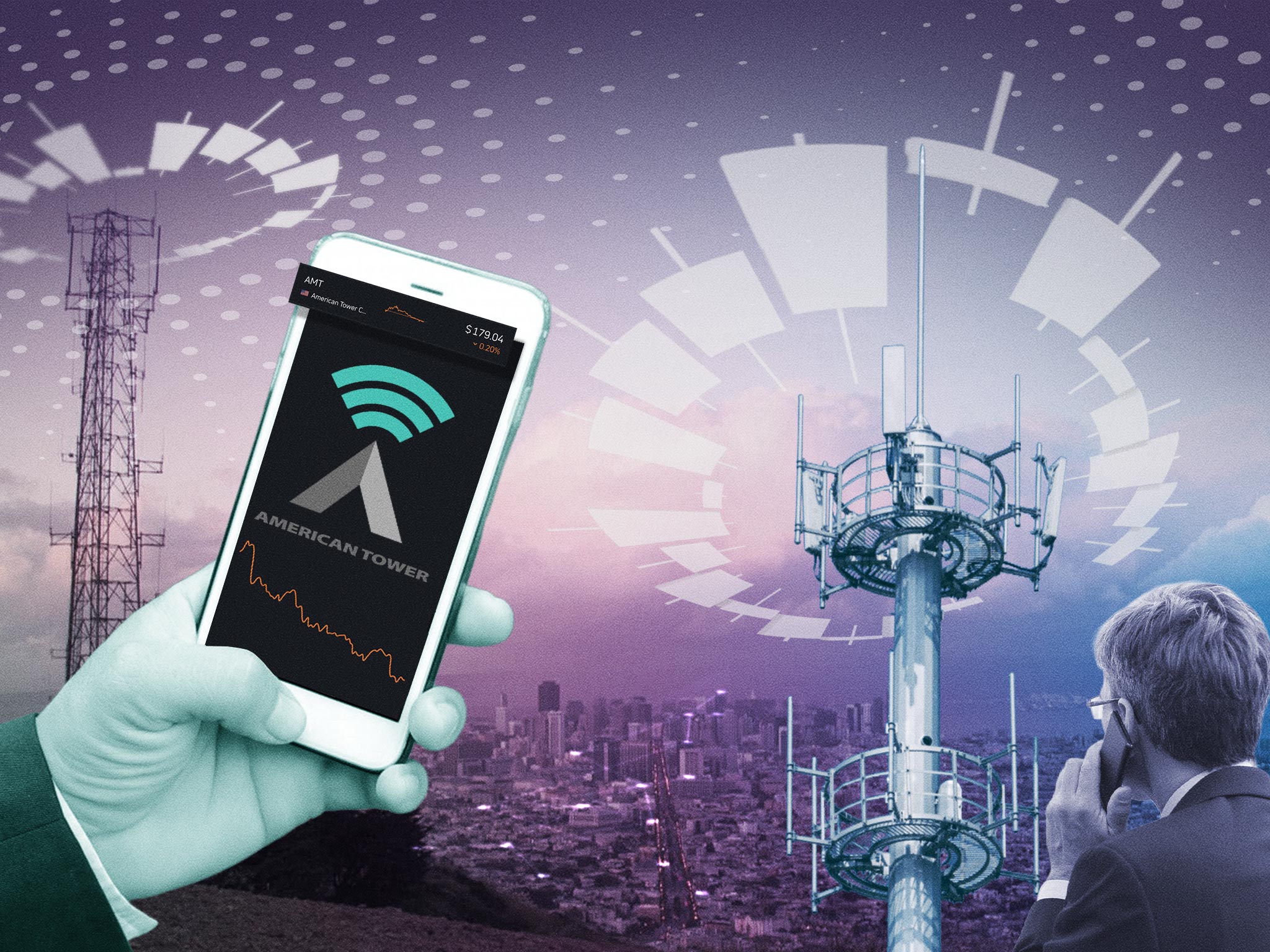Most of us probably haven’t thought much about the possibility of investing in cellphone towers. But they can provide steady revenue, acting as toll collectors for data transmission, much like oil pipelines in the energy business.
Antennas on the towers transmit data and voice signals for telecommunications carriers such as AT&T (NYSE: T), Verizon (NYSE: VZ) and T-Mobile US (NASDAQ: TMUS). They pay rent to tower-owner companies, which lease the land on which the towers stand. The carriers generally have multi-year contracts with annual escalators to pay for renting space on the towers.
American Tower (NYSE: AMT) is the biggest U.S. owner of towers, with more than 149,000 around the world. It also has a thriving data-center business, which accounts for 10% of revenue.
Geographically, the U.S. and Canada make up 50% of revenue (almost all from the US), Latin America 16%; Africa, Asia and the Pacific 14%; and Europe 9% (data-center revenue makes up the other 10%). Brazil is the top market in Latin America, India is tops in Asia and Germany in Europe. AMT has a market capitalization of $85 billion.
The overarching theme for American Tower and its two competitors – Crown Castle (NYSE: CCI) and SBA Communications (NASDAQ: SBAC) – is the ongoing explosion of voice and data transmission. That includes the deployment of 5G technology.
Serious data flood
The global volume of data created should reach 181 zettabytes by the end of this year, up from 149 zettabytes last year and 64 zettabytes in 2020, according to Statista.
So it’s no wonder that AMT’s revenue gained 7.7% in the third quarter from a year earlier to $2.7 billion. And its profit soared 216.9% to $913 million, though the increase was primarily due to foreign currency losses a year ago.
Services revenue nearly doubled, indicating U.S. carriers are increasing site planning activities, notes Morningstar analyst Michael Hodel. Data center revenue climbed 14%, and he expects that growth to accelerate in 2026, as more capacity comes online. The gross profit margin registered 75% in the third quarter.
The company raised the midpoints of its full-year 2025 outlook for property revenue, adjusted funds from operations (a key metric for real estate investment trusts like AMT) and adjusted earnings before interest, taxes, depreciation and amortization.
Growth opportunities are strongest overseas, analysts say. “Many international markets, especially in Africa, are still progressing through 4G,” Hodel points out. “Continued investment in new technologies, amid soaring data consumption, should continue to drive international growth. International markets add risks, though, especially during periods of carrier consolidation.”
Steady as she goes
For American Tower and the industry as a whole, he sees steady but not explosive growth. “Continued carrier 5G buildouts and increasing network density should drive growth over the next several years,” Hodel said.
“But we expect revenue growth to slow relative to the past decade. The carriers have now deployed much of the spectrum they bought in the early 2020s, and we don’t believe new auctions will fuel another step-up in demand over the near future.”
Meanwhile, thanks to its mushrooming revenue, American Tower has increased its dividend each year since it began the payout in 2011. The forward dividend yield stands 3.8%.
But that hasn’t helped the stock price lately. Since Dec. 31, 2021, it has dropped 39%. The decline followed a steep ascent of almost 400% in the previous 10 years, when the company expanded faster.
Looking ahead, moderate growth seems likely, but nothing is guaranteed.
The author owns shares of American Tower




Comments